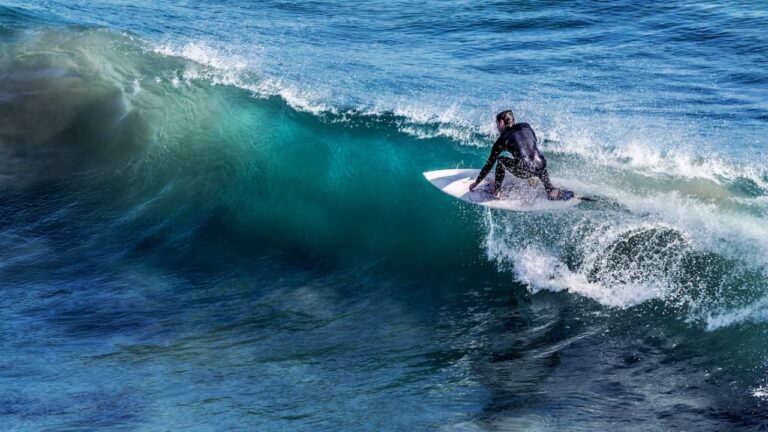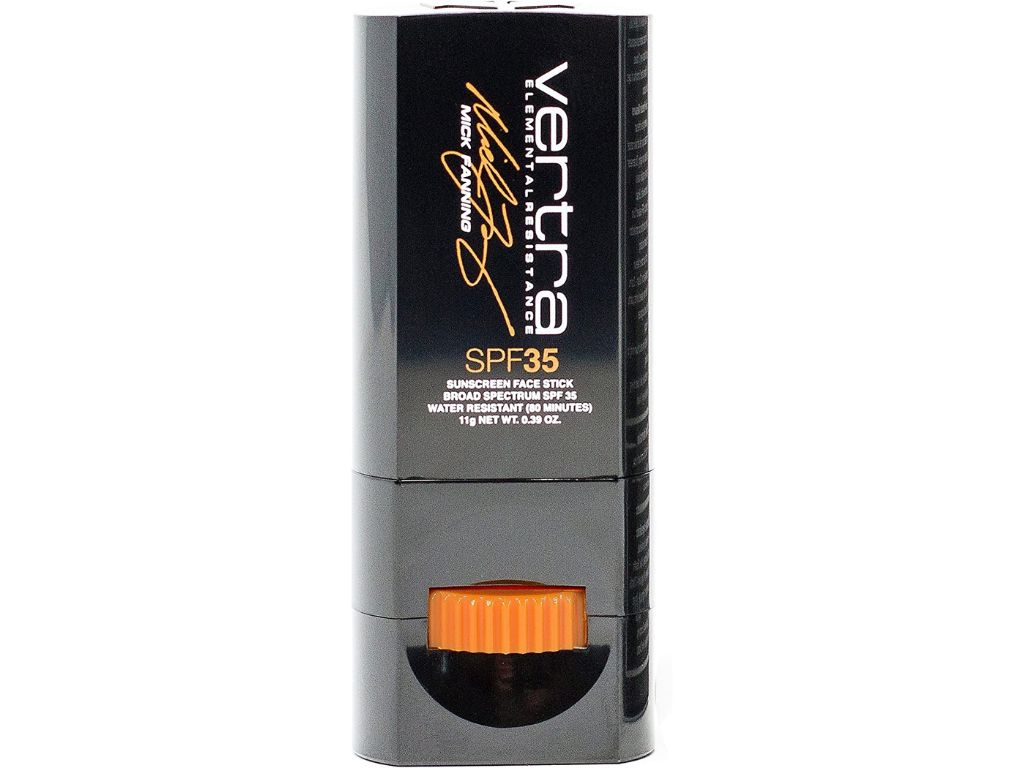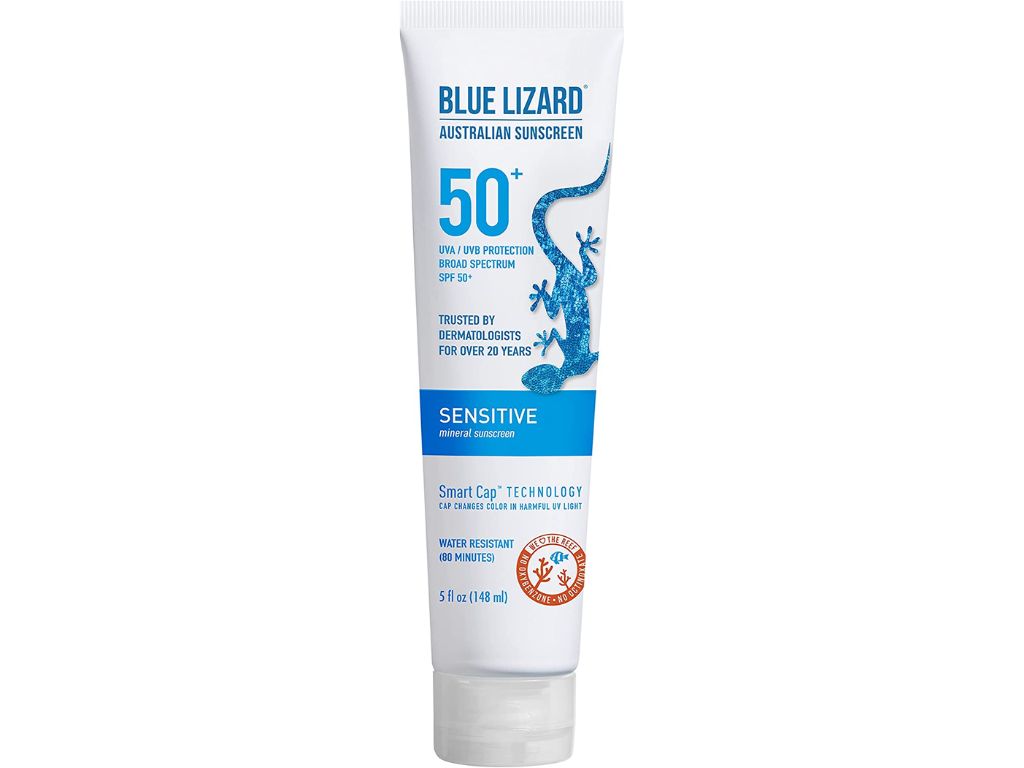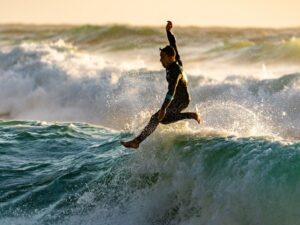If I ask you to think of a surfer, most of you will imagine a tan, blonde, blue-eyed dude catching a wave. Yeah, blame Hollywood for that. In reality, surfers come from various backgrounds and do not fit a single mold.
That said, you’re partially correct. Most surfers do tend to have “washed” blonde hair and a reddish hue in their eyes. And there’s a good reason for that: the Sun. Well, to be accurate, the UV radiation from the sunlight.
Many surfers have blonde hair due to prolonged exposure to the sun. Sunlight contains ultraviolet (UV) rays that can lighten hair color over time. This process is likely accelerated for surfers, who spend significant time on the beach, often under intense sunlight.
However, it’s important to note that while this is common among surfers, people of all occupations who spend time outdoors can develop similar vital characteristics. Additionally, your genetics and natural hair color before surfing may also play a role in perpetuating this stereotype.
In this blog, I’m gonna explain precisely how this happens. More importantly, whether it’s unsafe and, if so, how you can protect yourself.
Why do surfers have red eyes?
Okay. Many folks have lightened hair in the summer, so a washed / blonde look makes sense. But how can UV rays change your eye color over time?
Many surfers have red eyes due to sunlight and saltwater. Prolonged exposure to UV rays can cause photokeratitis (inflammation and redness in the eyes). Saltwater can also cause irritation and redness. Genetics and medical history also affect the intensity of the symptoms.
Although hair lightening and sunburns are more common among surfers, they are not unique. Other professionals, such as lifeguards and construction workers, may also develop blonde hair and red eyes due to sun exposure.
How do surfers protect themselves from sun damage?
According to an April 2022 study, surfers and swimmers are at a much higher risk of developing melanoma and other skin cancer. Among surfers, skin cancer is likely to start on the back (42.9%) and face (28.6%) due to prolonged exposure to sunlight and UV rays.
As popular as surfing may be, nobody willingly walks into a fire pit when the flames are high. You must take several precautions while surfing against UV rays and skin cancer.
To protect yourself from skin cancer, use sunscreen, wear protective clothing, and avoid sunburns, as they can develop into melanoma. Pay attention to changes in the skin, moles, and discolorations. If you notice anything, consult with a dermatologist post haste.

Here are some precautionary steps surfers must take to protect against skin cancer:
1. Apply sunscreen 15-30 minutes before surfing. It provides a barrier between the skin and the sun’s UV rays, which can help to prevent sunburn and skin damage. Choose a sunscreen with 30+ SPF and apply it generously to all exposed skin.
2. Use sunscreen every two hours while you’re on the beach. Or more frequently if you sweat a lot while surfing or swimming.
3. Protect against sun damage by wearing protective clothing. Long-sleeve rash guards or lycra shirts are good for protection against sunlight and abrasions. Otherwise, you can wear a wetsuit, especially in cold water.
4. Be mindful of the time and day you’re in the water. UV radiation is most intense between 10am and 4pm, so it’s best to avoid surfing during these hours if possible. If not, take frequent breaks under the shade.
5. Drinking plenty of water. It’ll help keep the skin hydrated which can help to prevent sun damage.
6. Check for signs of sun damage and skin cancer frequently. This includes checking for changes in the skin and looking for new moles or discoloration. Consult with a dermatologist if any suspicious spots are found. Regular full-body skin examinations can help to catch skin cancer in its early stages when it is most treatable.
7. Avoid using tanning beds. It can increase the risk of skin cancer and several other health hazards. UV lamps in tanning beds emit ultraviolet radiation much stronger than the radiation from the sun.
The International Agency for Research on Cancer has identified this type of radiation as a carcinogen.
What sunscreen should I use while surfing?
I have asked you to use sunscreen a bunch of times. It’s only fair I tell you which one to use.
The American Academy of Dermatology recommends surfers use a water-resistant sunscreen with 30+ SPF. They also suggest using a shot glass worth (about 1 ounce) to cover your whole body and reapply every two hours or immediately after surfing or sweating heavily.
Water-resistant sunscreen is especially important for surfers as it offers protection for extended periods, even when wet. While applying, it’s vital to cover all exposed skin, including hard-to-reach areas like the back of the neck and ears. It’s also a good idea to apply sunscreen for about 15 minutes before going outside to allow it to absorb into the skin fully.
1. Vertra Signature SPF 35 Face Stick

Vertra Signature SPF 35 Face Stick
Best for environment lovers.
Endorsed by the famous Mick Fanning, the Vertra Signature Face Stick is a foundation-based sunscreen offering great coverage. It comes in 4 different tints, one being a neutral translucent shade. The sunscreen offers up to 80 minutes of water resistance.
The tints are a plus; they blend nicely, and you’d rather not have a white clown face.
2. Blue Lizard SPF 50 Mineral Sunscreen

Blue Lizard SPF 50 Mineral Sunscreen
Ideal if you have sensitive skin.
The Blue Lizard SPF 50 Mineral Sunscreen is the best for sensitive skin. It has no toxins or potentially irritating chemically active ingredients. So, you can even use it for babies. This sunscreen is reef safe and stays water-resistant for upto 80 minutes.
An interesting feature of the lotion bottle is its smart cap. The smart cap is said to turn blue when it detects UV rays which is a sign that you should put on sunscreen to protect yourself.
See my guide below if you want more options or know more about choosing the best sunscreen.
Expert QnA
Q. Is the stereotype of surfers having blonde hair and red eyes accurate?
The stereotype of the blonde-haired, red-eyed surfer has been perpetuated in popular culture, but it doesn’t accurately represent the surfing community. The reason for such symptoms can vary from genetics to sun exposure and preexisting hair and eye color.
Q. Can surfing lead to skin cancer?
While surfing can’t cause skin cancer, it can lead to melanoma and other dangerous forms of skin cancer. Prolonged exposure to the sun’s UV rays leads to sunburns and cancer among surfers. It’s important to apply sunscreen and avoid surfing without protective clothing.





